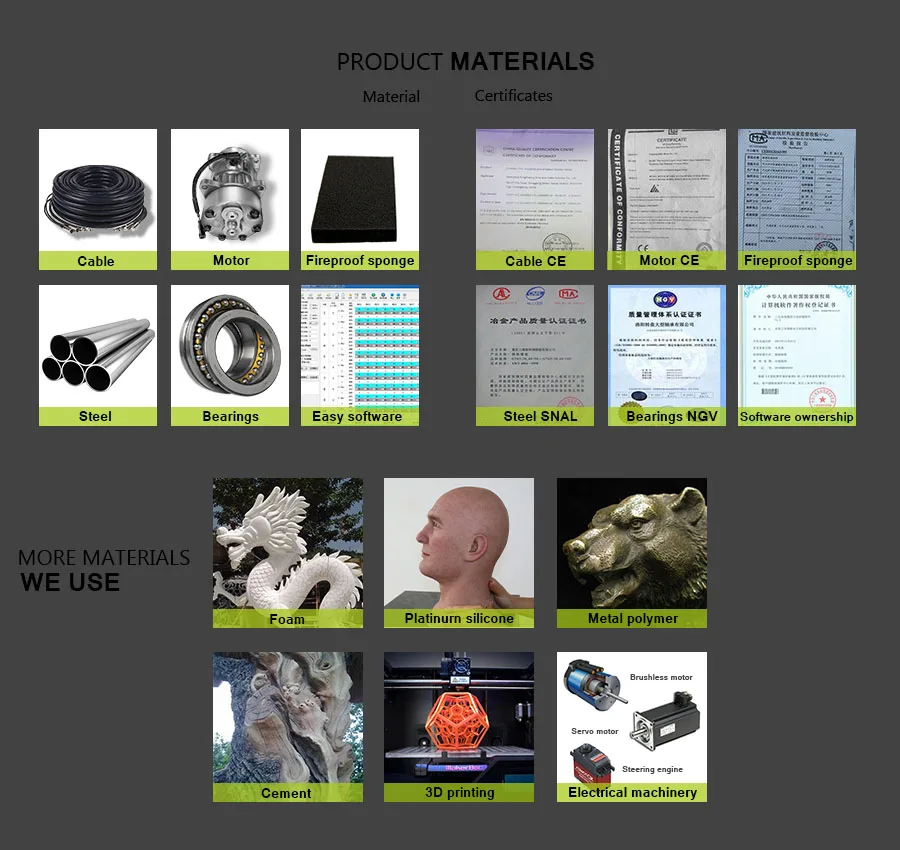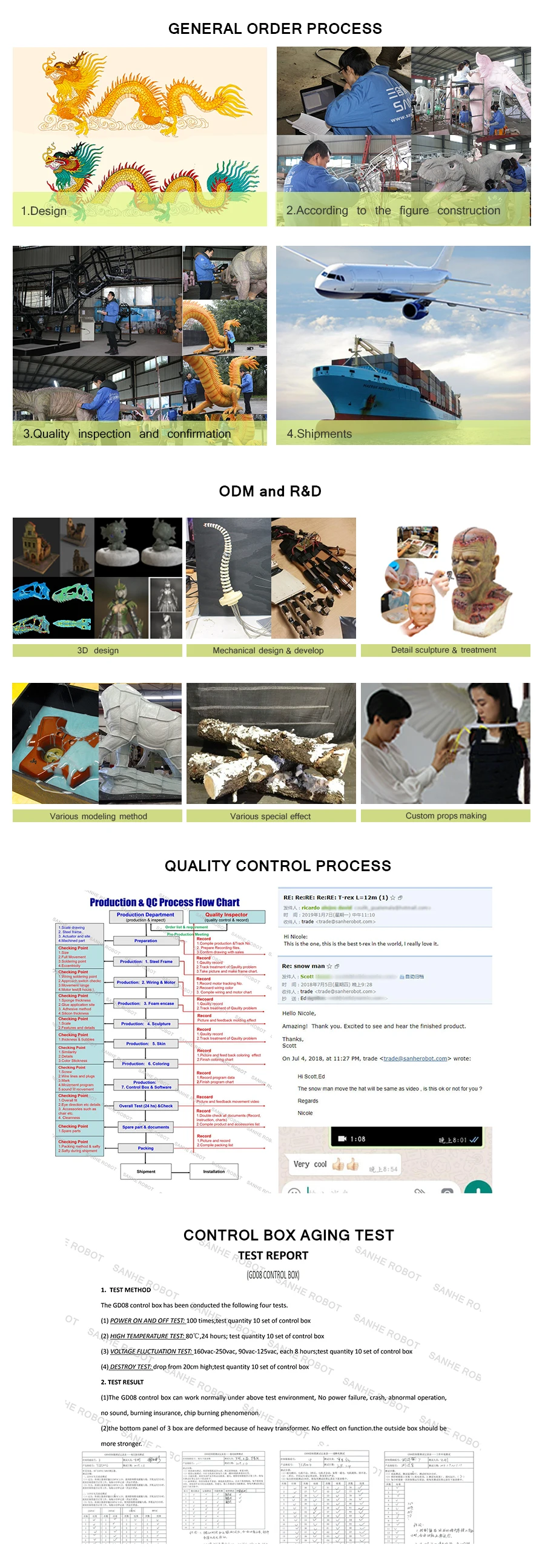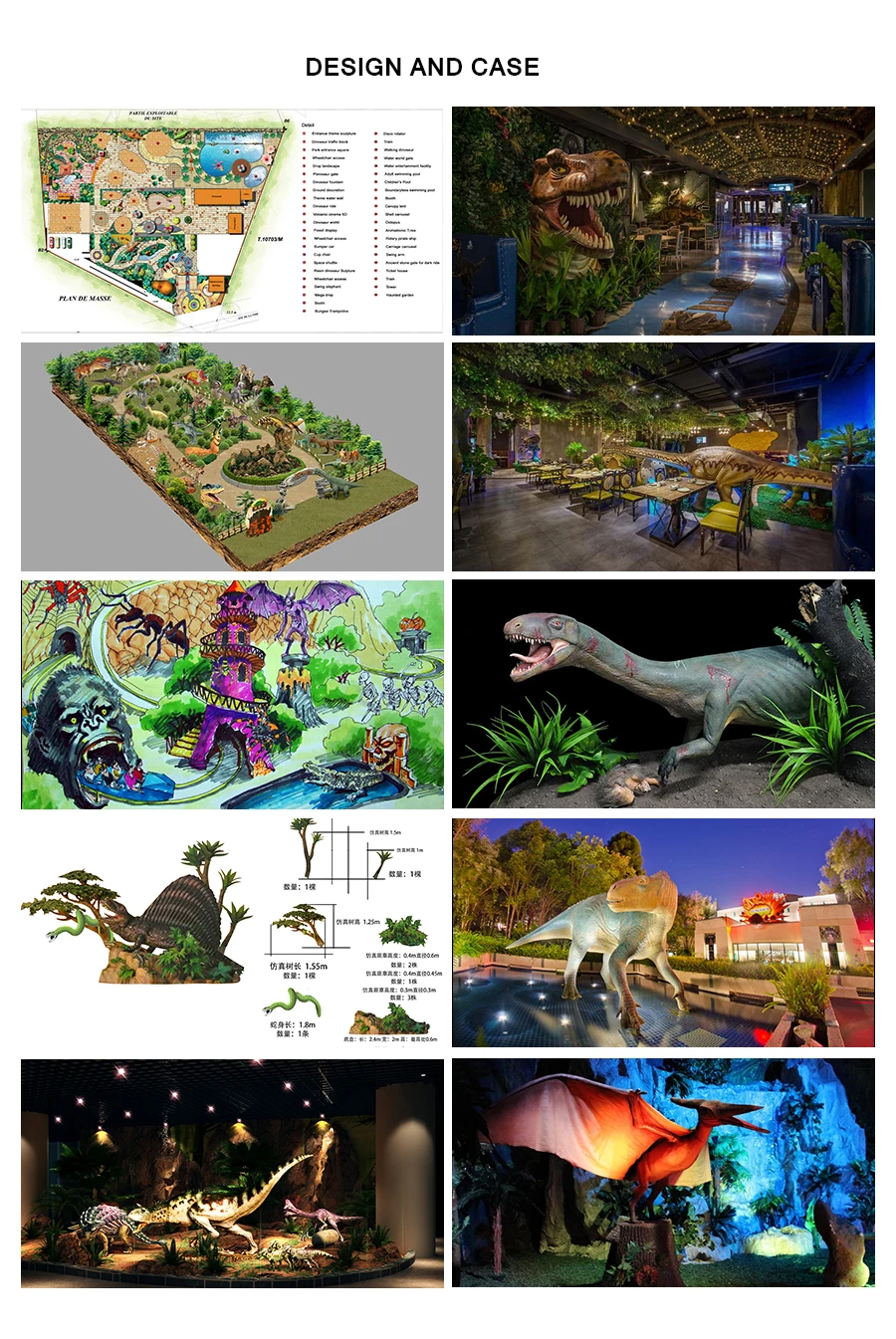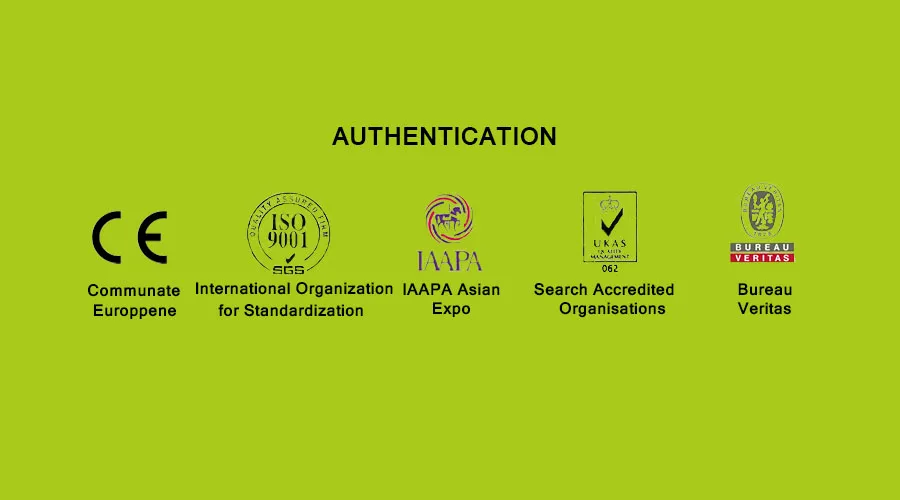Adventure park animatronic dinos' on-site
Dinosaur Pterosaur
MORE INFORMATION
| Input | AC 110/220V ,50-60HZ |
| Plug | Euro plug / British Standard / SAA / C-UL / or depends on request |
| Control mode | Automatic / Infrared / remote / coin / Button / Voice / Touch / Temperature / shooting etc. |
| Waterproofing grade | IP66 |
| Working condition | Sunshine, rain, seaside, 0~50℃(32℉~82℉) |
| Optional function | Sound can be increased to 128 kinds Smoke,/ water. / bleed / smell / change color / change lights / LED screen etc interactive(Location tracking) / conversine(currently only Chinese) |
AFTER-SALE SERVICE
| Service | Need be cut for shipping,fwill provide a detailed installation manual. |
| Warranty | We provide 2 years warranty for all of our antrimatronic models, the warranty pieriod starts from freight arrives at destination port. Our warranty covers motor, reducer, control box, etc. |






 theme park dino park lifelike dino animatronic dino model for sale
dino dinosaur dino park dinosaur park dino world zigong manufacturer zigong dinosaur model supplier amusement park animatronic dinosaur dinosaur exhibit outdoor equipment resin dinosaurs real size dinosaur model lifesize robotic dinosaur metal robot dinosaur jurassic amusement park decoration lifesize robotic dinosaur zigong sanhe jurassic park model dinosaurus dinosaurios dinosaurios animatronic pterosaur animatronic fly dinosaur the animatronic buy animatronics
Pterosaurs from Greek pteron and sauros, meaning "wing lizard") were flying reptiles of the extinct clade or order Pterosauria. They existed during most of the Mesozoic: from the late Triassic to the end of the Cretaceous (228 to 66?million years ago. Pterosaurs are the earliest vertebrates known to have evolved powered flight. Their wings were formed by a membrane of skin, muscle, and other tissues stretching from the ankles to a dramatically lengthened fourth finger.
There were two major types of pterosaurs. Basal pterosaurs (also called 'non-pterodactyloid pterosaurs' or 'rhamphorhynchoids') were smaller animals with fully toothed jaws and, typically, long tails. Their wide wing membranes probably included and connected the hind legs. On the ground, they would have had an awkward sprawling posture, but their joint anatomy and strong claws would have made them effective climbers, and they may have lived in trees. Basal pterosaurs were insectivores or predators of small vertebrates. Later pterosaurs (pterodactyloids) evolved many sizes, shapes, and lifestyles. Pterodactyloids had narrower wings with free hind limbs, highly reduced tails, and long necks with large heads. On the ground, pterodactyloids walked well on all four limbs with an upright posture, standing plantigrade on the hind feet and folding the wing finger upward to walk on the three-fingered "hand". They could take off from the ground, and fossil trackways show at least some species were able to run and wade or swim.[9] Their jaws had horny beaks, and some groups lacked teeth. Some groups developed elaborate head crests with sexual dimorphism.
theme park dino park lifelike dino animatronic dino model for sale
dino dinosaur dino park dinosaur park dino world zigong manufacturer zigong dinosaur model supplier amusement park animatronic dinosaur dinosaur exhibit outdoor equipment resin dinosaurs real size dinosaur model lifesize robotic dinosaur metal robot dinosaur jurassic amusement park decoration lifesize robotic dinosaur zigong sanhe jurassic park model dinosaurus dinosaurios dinosaurios animatronic pterosaur animatronic fly dinosaur the animatronic buy animatronics
Pterosaurs from Greek pteron and sauros, meaning "wing lizard") were flying reptiles of the extinct clade or order Pterosauria. They existed during most of the Mesozoic: from the late Triassic to the end of the Cretaceous (228 to 66?million years ago. Pterosaurs are the earliest vertebrates known to have evolved powered flight. Their wings were formed by a membrane of skin, muscle, and other tissues stretching from the ankles to a dramatically lengthened fourth finger.
There were two major types of pterosaurs. Basal pterosaurs (also called 'non-pterodactyloid pterosaurs' or 'rhamphorhynchoids') were smaller animals with fully toothed jaws and, typically, long tails. Their wide wing membranes probably included and connected the hind legs. On the ground, they would have had an awkward sprawling posture, but their joint anatomy and strong claws would have made them effective climbers, and they may have lived in trees. Basal pterosaurs were insectivores or predators of small vertebrates. Later pterosaurs (pterodactyloids) evolved many sizes, shapes, and lifestyles. Pterodactyloids had narrower wings with free hind limbs, highly reduced tails, and long necks with large heads. On the ground, pterodactyloids walked well on all four limbs with an upright posture, standing plantigrade on the hind feet and folding the wing finger upward to walk on the three-fingered "hand". They could take off from the ground, and fossil trackways show at least some species were able to run and wade or swim.[9] Their jaws had horny beaks, and some groups lacked teeth. Some groups developed elaborate head crests with sexual dimorphism.

+86-813-2104677

info@sanherobot.com

+86-13990010824

No.13 Huixin Road, Yantan Town, Yantan District, Zigong City, Sichuan Province, China